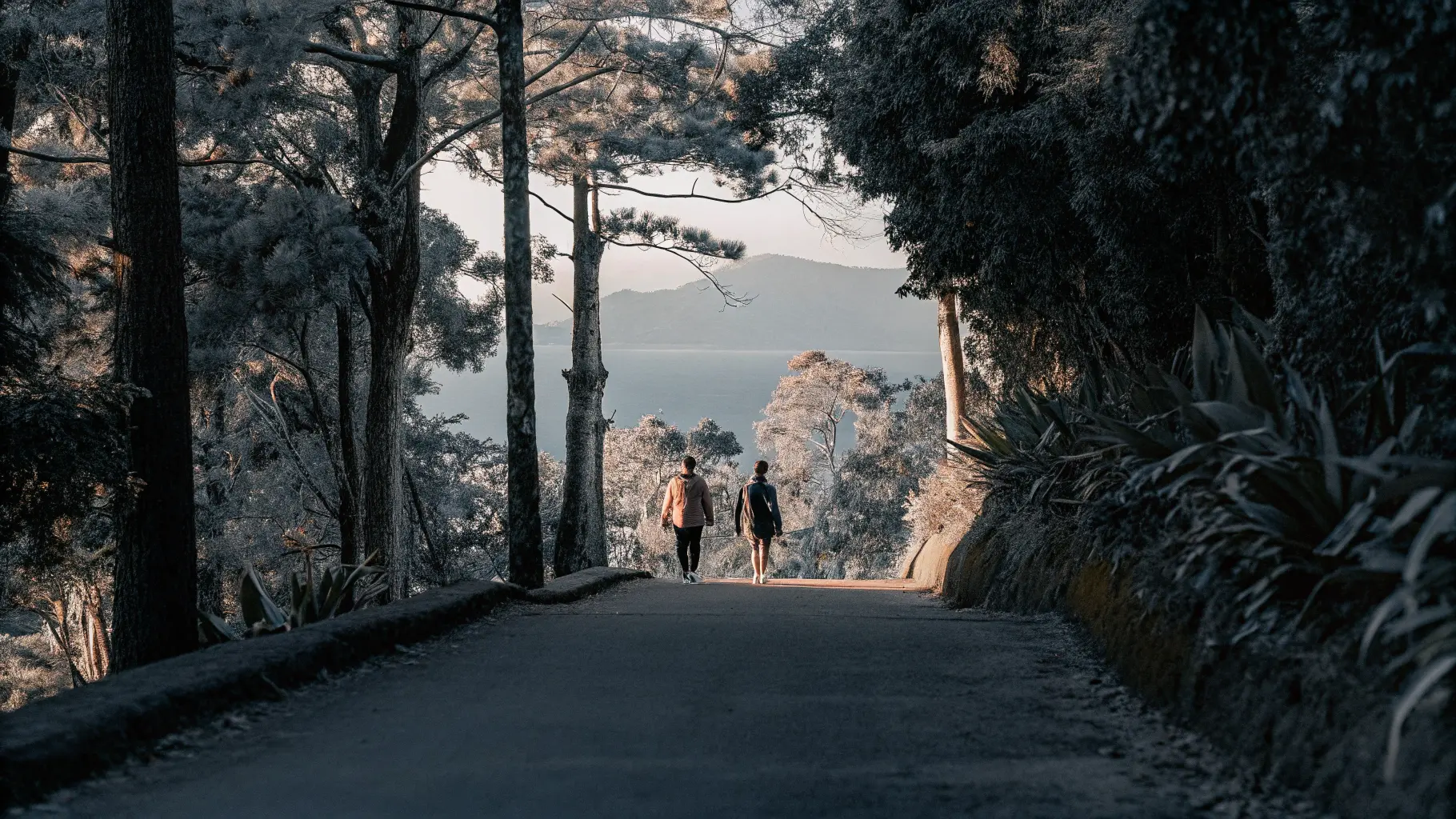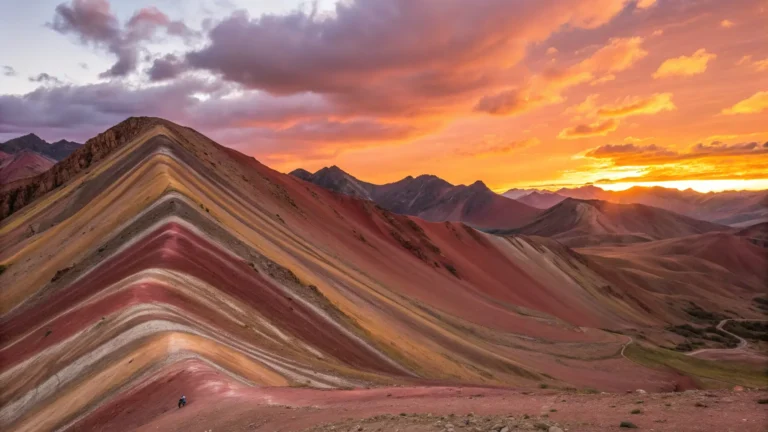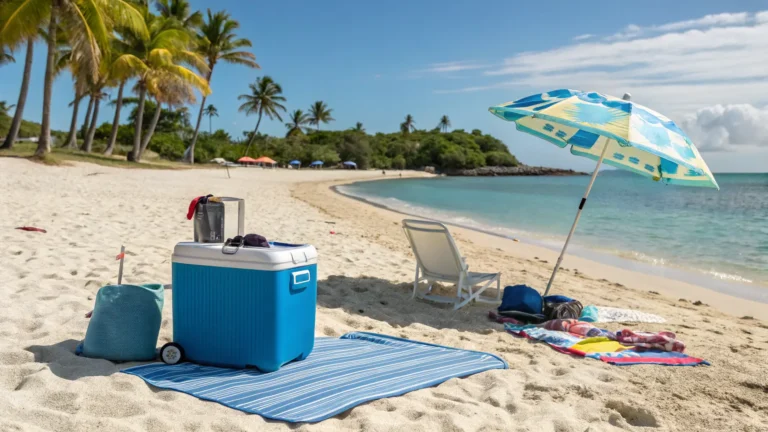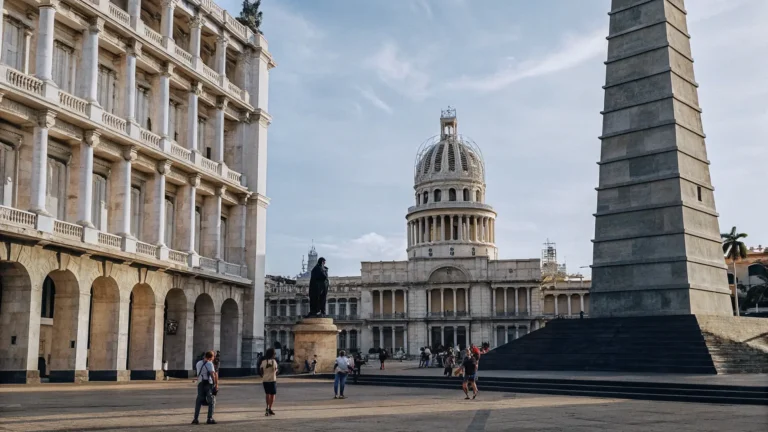Outdoor Travel Needs 10 Ways to Travel Light and Happy
You know that feeling when you’re huffing and puffing up a trail, your pack digging into your shoulders like it’s got a personal vendetta against you? Yeah, I’ve been there. More times than I care to admit. That’s why figuring out my outdoor travel needs became non-negotiable because the right gear makes all the difference.
My wake-up call happened three summers ago on what should’ve been a simple overnight trip to Mirror Lake in Utah. I was so paranoid about forgetting something important that I packed like I was moving to Mars permanently. Two pairs of hiking boots, four different jackets, enough food to feed a small village, and – get this – a camp chair that weighed seven pounds because “comfort is important.”
By the time I reached the first switchback, I was already regretting every life choice that led me to that moment. My pack felt like it was filled with concrete blocks, and I hadn’t even covered a mile yet. That’s when it hit me: I was doing this whole outdoor thing completely wrong.
The worst part? While I was struggling with my portable apartment, other hikers were practically floating past me with these tiny packs, looking like they were out for a casual stroll. They weren’t suffering – they were actually enjoying themselves. That day changed everything for me.
Table of Contents
Why Nailing Your Pack Weight Starts With the Right Outdoor Travel Needs
Here’s something nobody talks about enough: your pack weight directly affects how much fun you have outdoors. It’s not just about physical comfort (though that matters a lot). It’s about your entire mindset and experience.
When your pack is heavy, you spend most of your mental energy just dealing with the discomfort. You’re not noticing the wildflowers along the trail or listening to the birds. You’re just counting steps and wishing you were back at your car.
But when you get your outdoor travel needs dialed in just right? That’s when the real magic happens. You move with confidence, you have energy to actually look around and enjoy where you are, and you stop dreading uphill sections.
I’ve talked to hundreds of hikers over the years, and the pattern is always the same. The people having the most fun are rarely the ones with the most gear. They’re the ones who figured out exactly what they need and left everything else at home.
Understanding What You Actually Need Out There
Before we jump into specific strategies, let’s get honest about what “essential” really means. I used to think I needed backup options for my backup options. Turns out, that’s just anxiety talking.
Your real outdoor travel needs boil down to staying safe, comfortable, and fed. That’s it. Everything beyond those basics is either supporting those goals or it’s just extra weight you’re carrying for no good reason.
Think about it this way: people have been venturing into the wilderness for thousands of years with way less stuff than what most of us pack for a weekend trip. I’m not saying we should go back to animal skins and flint, but maybe we don’t need quite as much as we think we do.
The 10 Strategies That Actually Work
1. Make Every Item Earn Its Place
This mindset shift saved me more pack weight than any fancy ultralight gear ever could. Instead of asking “might I need this?” start asking “will I definitely use this?”
My camp mug isn’t just for coffee – it’s also my measuring cup and soup bowl. My trekking poles double as tent supports. That little roll of duct tape wrapped around my water bottle has fixed everything from torn rain gear to loose boot soles.
The smartphone thing is huge too. Mine replaces my camera, GPS, weather radio, entertainment system, flashlight, and emergency communication device. Just make sure you have backup power and know how to use it properly.
Things that should serve multiple purposes: • Bandana (towel, first aid, pot holder, repair material) • Paracord (clothesline, gear repair, emergency shelter) • Safety pins (gear repair, first aid, clothesline clips) • Pocket knife (food prep, gear maintenance, emergency tool)
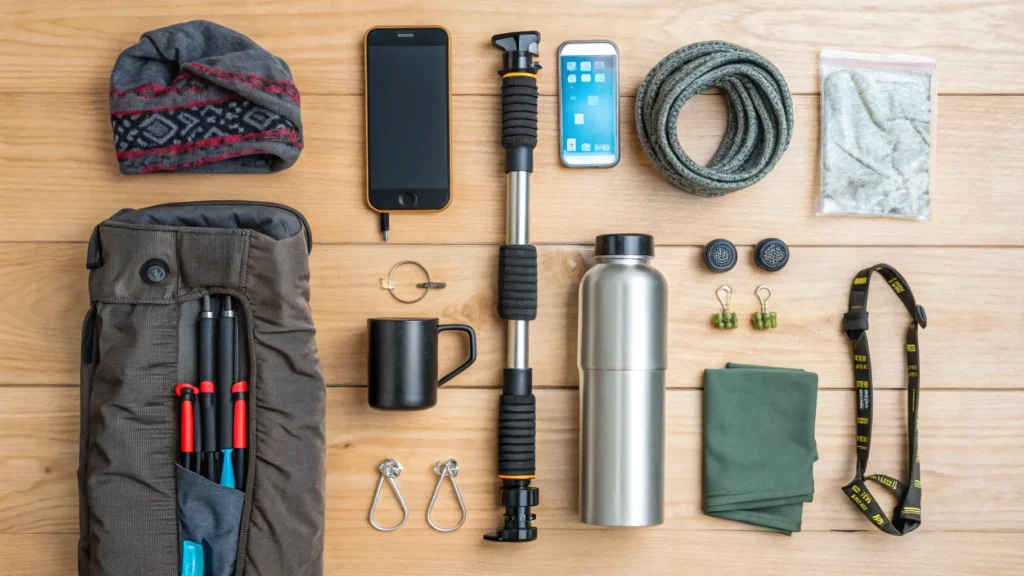

2. Focus on Materials That Actually Matter
I wasted so much money in my early days buying “lightweight” gear that fell apart the first time I really needed it. Cheap ultralight equipment is usually just regular equipment made with thinner materials. That’s not necessarily better.
The key is understanding the trade-offs. Down sleeping bags are lighter and pack smaller than synthetic, but they’re useless when wet. Merino wool costs more than synthetic base layers, but it doesn’t stink after three days of use.
My rain jacket weighs twice as much as some ultralight options, but it’s kept me dry through some absolutely miserable weather. Sometimes that extra few ounces is worth it for the peace of mind.
3. Build a Layering System That Actually Works
Most people overthink this way too much. You don’t need a different outfit for every possible temperature and weather condition. You need a flexible system that adapts.
I stick to three basic layers: something that wicks moisture away from my skin, something that traps warm air when I need it, and something that blocks wind and rain when the weather turns nasty. Everything else is just variations on that theme.
My personal system (adjust for your climate): • Lightweight merino base layer (top and bottom) • Synthetic or down insulation jacket • Breathable rain shell • One pair of hiking pants plus one backup • Enough socks and underwear for trip length plus one extra day
I can’t remember how many times the “plus one” rule has saved my life. Wet socks and underwear can turn a good trip into pure misery fast.
4. Get Strategic About Food Weight
Food is usually the heaviest category in your pack, but it’s also where you have the most control. Making the most calories per ounce without eating cardboard at every meal is the challenge.
I used to pack like I was going to a fancy restaurant every night. Fresh vegetables, canned goods, glass jars of sauces. Now I focus on foods that pack light, cook fast, and actually taste good enough to keep my morale up.
In recent years, dehydrated meals have advanced significantly. They’re not gourmet dining, but they’re definitely edible and they pack ridiculously light. For breakfast and lunch, I stick to things like instant oatmeal, energy bars, nuts, and dried fruit.
My food strategy checklist: • Target 125-130 calories per ounce minimum • Choose meals that cook quickly (saves fuel weight) • Pack one “luxury” food item for morale (usually chocolate) • Avoid anything in heavy packaging • Test new foods at home first
5. Don’t Compromise on Safety (But Don’t Go Overboard)
This is where a lot of people get confused about outdoor travel needs. Safety gear is absolutely essential, but that doesn’t mean you need to prepare for every disaster scenario imaginable.
Your safety kit should match your specific trip and skill level. A day hike near a popular trailhead needs different preparation than a solo multi-day trip in remote wilderness.
I keep my first aid kit pretty basic but comprehensive: bandages, antiseptic, pain relievers, any personal medications, and emergency shelter. For navigation, I use my phone as primary but always carry a paper map and compass as backup.
Safety essentials (adjust for your situation): • First aid supplies appropriate for group size and trip length • Navigation tools with backup method • Emergency shelter (even if it’s just a space blanket) • Fire starting materials (waterproof matches and tinder) • Emergency communication for remote areas
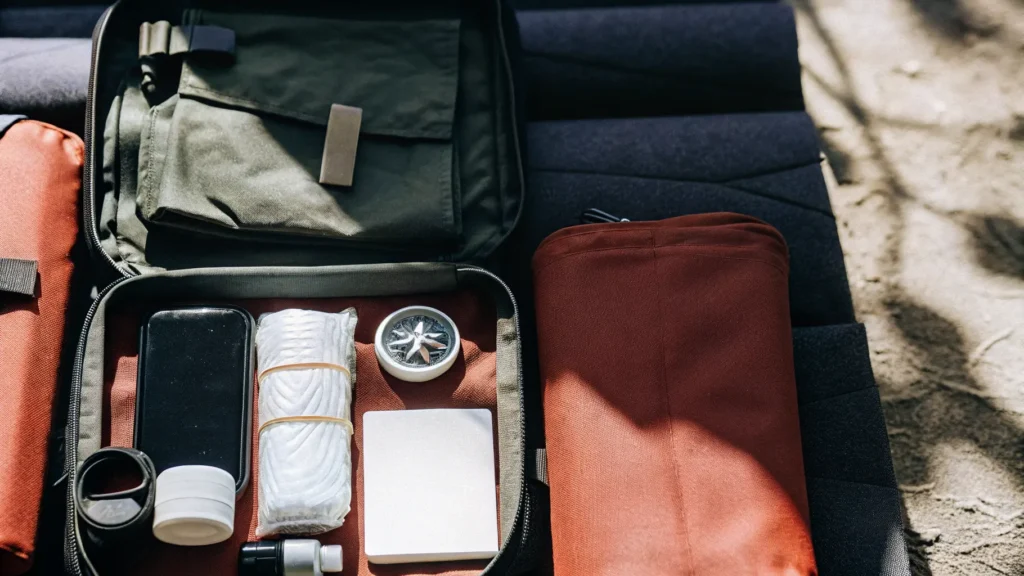

6. Master the Water Weight Challenge
Water is heavy and you can’t really get around that fact. But you can be smart about it. This is where good trip planning really pays off.
I spend time before every trip studying water sources along my route. In most established hiking areas, you can find reliable water every few miles. That means I don’t need to carry a full day’s supply all at once.
My standard setup is a lightweight filter, purification tablets as backup, and enough carrying capacity for the longest stretch between sources. In desert conditions, obviously, you need to adjust this approach significantly.
Water management tips: • Research water sources before you go • Carry purification method plus backup • Know the signs of water-related illness • In questionable areas, err on the side of caution • Consider electrolyte replacement for long, hot days
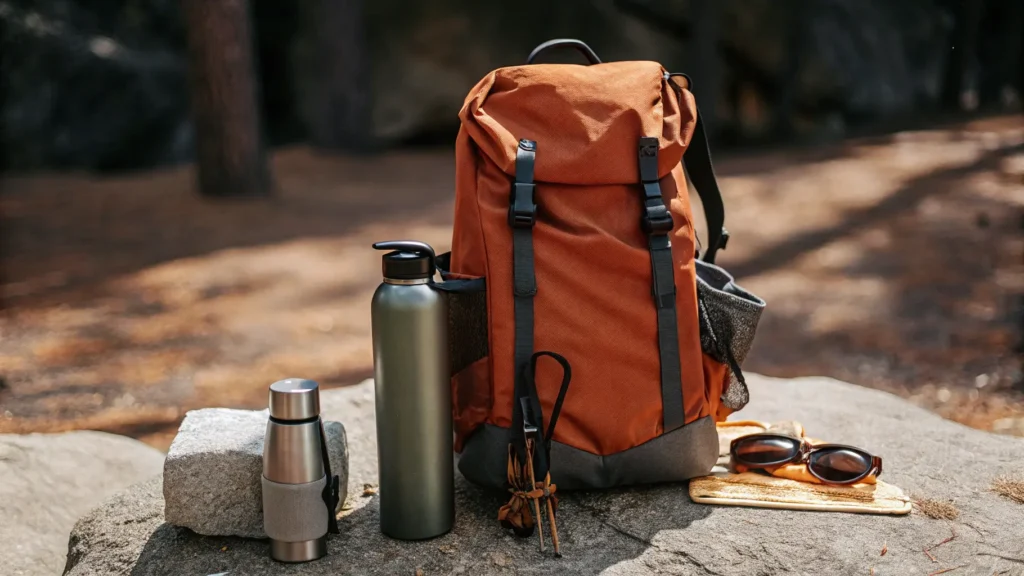

7. Choose the Right Pack Size
This took me forever to figure out, but pack size really matters for controlling your outdoor travel needs. A bigger pack just encourages you to fill it with stuff you don’t actually need.
For day hikes, I use a 28-liter pack and it forces me to be selective about what I bring. Overnight trips get a 45-liter pack. Multi-day adventures might need up to 60 liters, but honestly, if you’re packing efficiently, you rarely need more than that.
The fit matters more than the exact size though. A poorly fitting pack will make you miserable regardless of how much it weighs. Get properly fitted at a good outdoor store if you’re investing in new gear.
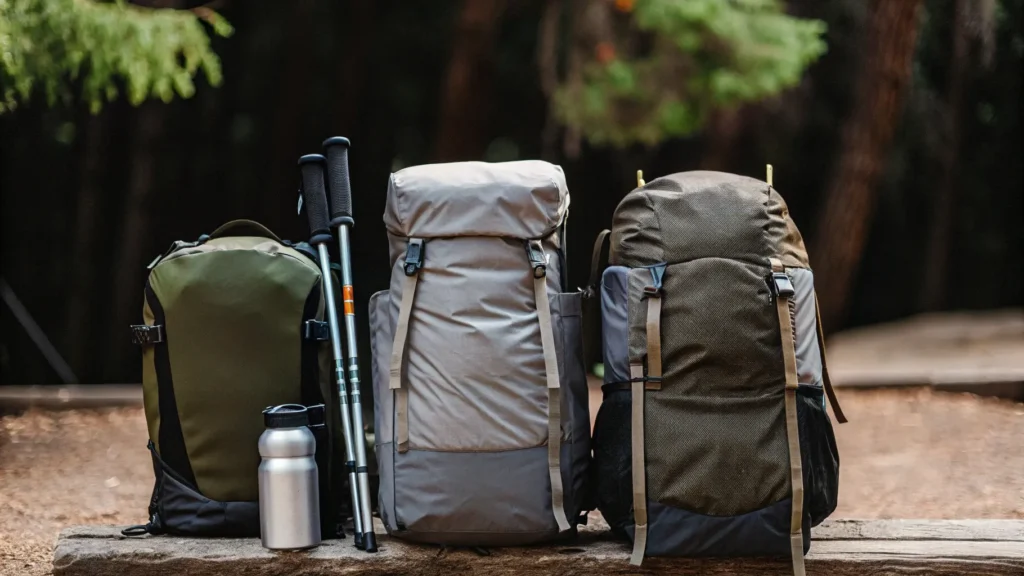

8. Practice the Art of Leaving Stuff Behind
This is honestly the hardest skill to master. Our brains are wired to prepare for every possible scenario, which leads to massive overpacking.
But here’s what I’ve learned through experience: most outdoor emergencies can be handled with basic problem-solving skills and the gear you already have. You don’t need three backup options for everything.
I used to pack like I was heading to a place where stores don’t exist. Multiple pairs of shoes, enough clothes for two weeks, books I’d never actually read, gadgets I’d never actually use. Now I ask myself: “What’s the worst realistic thing that could happen if I don’t bring this?”
Stuff you can probably skip: • Multiple pairs of footwear (unless conditions demand it) • Backup clothes beyond one extra set • Books or magazines (your phone works fine) • Camping furniture that’s just for comfort • Duplicate tools and gadgets
9. Use Trip Planning to Reduce Gear Needs
The more you know about where you’re going, the less you need to guess about what you’ll need. This has probably saved me more pack weight than any other single strategy.
I check weather forecasts obsessively. I research trail conditions and recent trip reports. I look up water availability and camping regulations. All of this information helps me pack for the actual conditions I’ll face instead of every possible scenario.
Last fall, I planned a four-day section hike in Virginia. My research showed stable weather, good water sources, and well-maintained trails. That let me leave behind extra layers, backup water containers, and repair gear I might have brought to a more remote or challenging location.
10. Upgrade Thoughtfully, Not Compulsively
The outdoor gear industry wants you to believe that better equipment automatically makes you a better outdoors person. That’s mostly nonsense, but strategic upgrades can make a real difference in your outdoor travel needs.
Focus on the items that have the biggest impact on your comfort and pack weight. Usually that’s your big four: backpack, shelter, sleep system, and cooking setup.
Don’t feel like you need to replace everything at once. I made that expensive mistake early on and ended up with a bunch of gear that didn’t work well together. Take your time and upgrade pieces as you identify specific problems with what you have.
My upgrade priority list:
- Backpack (if current one doesn’t fit or is too heavy)
- Sleep system (bad sleep ruins everything)
- Shelter (reliable weather protection is crucial)
- Cooking gear (efficiency matters on longer trips)
- Everything else (only if it’s causing specific problems)
The Mistakes That Keep Adding Weight
Let me tell you about the mistakes I see over and over again, because I’ve probably made all of them myself at some point.
The biggest one is what I call “disaster imagination syndrome.” You start thinking about every bad thing that could possibly happen and packing solutions for all of them. What if it gets unexpectedly cold? What if my gear breaks? What if I get lost? What if aliens land and I need to trade them camping supplies?
Okay, maybe not that last one, but you get the idea. You can’t prepare for every possible situation without carrying ridiculous amounts of gear.
The other major mistake is using the same packing approach for every trip. Your outdoor travel needs for a day hike in your local park are completely different from a week-long wilderness expedition. Adjust your approach based on the specific challenges and risks of each adventure.
Finding Your Personal Sweet Spot
Here’s the truth: there’s no perfect universal system for outdoor travel needs. What works perfectly for me might be completely wrong for you, and that’s totally fine.
Your ideal setup depends on your experience level, comfort preferences, typical destinations, and even your personality. Some people require additional equipment in order to feel secure and at ease. Others are happy with bare minimum setups.
The key is paying attention to your own patterns and preferences. After every journey, make notes on what went well and what didn’t. Take note of what you brought but never touched vs what you really utilized.
Questions I ask myself after every trip: • What did I carry but never use? • What did I wish I had with me? • Which gear performed better or worse than expected? • How did my pack weight feel throughout the trip? • What would I do differently next time?
Making It All Work Together
After years of trial and error, here’s what I want you to understand: smart packing isn’t about suffering or depriving yourself. It’s about making intentional choices that support the kind of outdoor experience you actually want to have.
My current setup weighs about 15 pounds for most three-season trips, compared to those painful 40+ pound loads I used to carry. But the exact weight isn’t what matters most. What matters is that I now spend my time outdoors actually enjoying myself instead of just surviving.
The strategies I’ve shared here aren’t just theoretical advice. They’re lessons learned through plenty of mistakes, uncomfortable nights, and gradually figuring out what actually works in the real world.
Start small. Pick one or two approaches that resonate with you and try them on your next adventure. As you gain experience and confidence, you’ll naturally develop your own system for balancing preparedness with freedom.
Remember, the goal isn’t to carry the least possible weight. It’s to carry exactly what you need to have safe, comfortable, enjoyable adventures. Sometimes that means bringing a few extra ounces for peace of mind or morale. That’s perfectly fine.
The mountains, forests, and trails are waiting for you. Now you have the tools to meet them on your own terms, with everything you need and nothing you don’t.
What’s your biggest challenge when it comes to packing for outdoor adventures? I’d love to hear about your experiences and what’s worked (or hasn’t worked) for you. Drop a comment below and let’s figure it out together.

